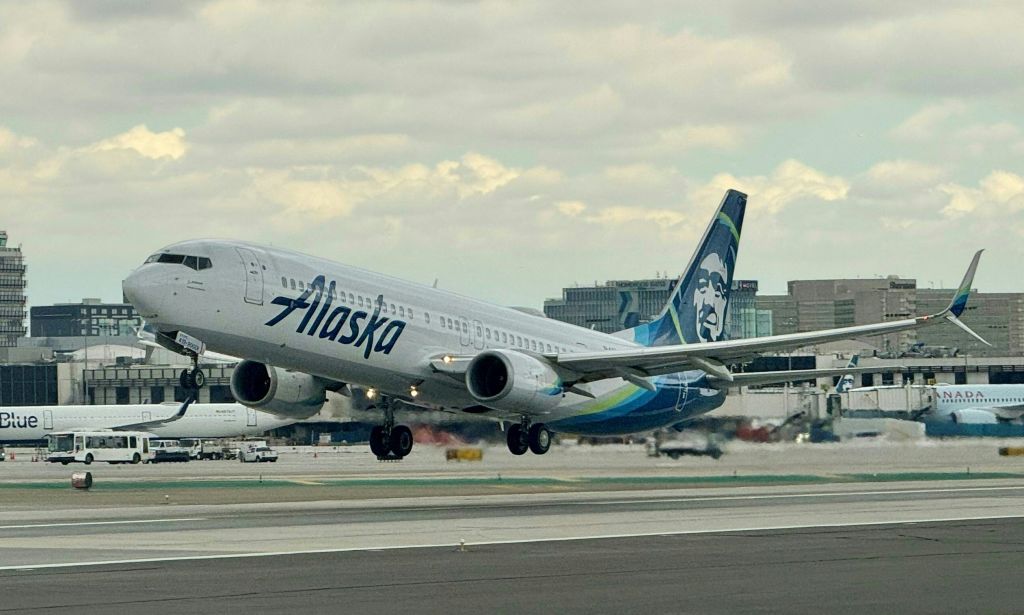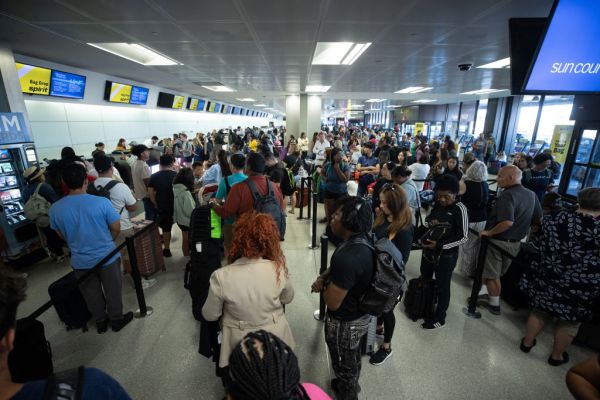Multiple accidents involving Boeing’s 737 Max 9 planes have kept the corporation in the news and under Federal Aviation Administration (FAA) investigation. But questions remain around whether the FAA has done all it should to help fix Boeing’s problems.
Boeing’s ongoing problems.
On January 6, the FAA grounded approximately 171 Boeing 737 Max 9 planes after a left mid-cabin door plug blew out of Alaska Airlines Flight 1282 while in flight. The flight returned to Portland International Airport in Oregon (seven passengers and one flight attendant sustained minor injuries). A National Transportation Safety Board (NTSB) preliminary report found that “four bolts that prevent upward movement of the door plug were missing.” The FAA was one of the collaborating agencies on the NTSB investigation of Flight 1282.
The FAA conducted a six-week audit of Boeing and its suppliers, Spirit AeroSystems, which produces the fuselage of the 737 Max 9. According to a presentation reviewed by the New York Times, Boeing and Spirit failed to comply with quality-control requirements. Of the 89 product audits, a type of FAA review focusing specifically on parts of the production process, Boeing passed 56 and failed 33. The presentation mentions 97 incidents of “alleged non-compliance.” Of the 13 product audits conducted on Spirit AeroSystems, only six received passing grades.
This came after another, congressionally mandated investigation of Boeing for previous problems. After two fatal Boeing 737 Max 9 crashes in 2018 and 2019 that killed 346 people, a panel was directed by Congress to review Boeing’s safety management processes. Released in February, the panel’s report found a “disconnect” between the “planemaker’s senior management and employees on safety culture and raised other concerns.” According to the report, recent issues, such as with Flight 1282, “amplified the expert panel’s concerns that the safety-related messages or behaviors are not being implemented across the entire Boeing population.”
During a February meeting at FAA headquarters in Washington, D.C., FAA Administrator Mike Whitaker directed Boeing’s CEO and other senior leaders to address the FAA audit findings as part of its comprehensive corrective action plan to fix systemic quality control issues. They must also address how safety gaps found in the expert panel’s report will be closed in their action plan.
Until further notice, the FAA has halted production expansion of the Boeing 737 Max 9.* The agency is also exploring the possibility of using a third party to conduct independent reviews of quality control measures and will continue its increased onsite presence at Boeing’s facility in Renton, Washington, and Spirit AeroSystems’ facility in Wichita, Kansas.
What’s the FAA’s role in these circumstances?
Among other duties, the FAA researches and develops the systems and procedures needed for a safe and efficient system of air navigation and air traffic control.
“Specifically, when it comes to manufacturers like Boeing, the FAA’s authority encompasses the certification of aircraft designs to ensure they meet safety standards, continuous oversight of manufacturing processes, and the issuance of airworthiness directives to address safety issues,” Chris Handley, a former FAA aviation safety inspector, told The Dispatch. “The FAA ensures that aircraft manufacturers comply with all applicable safety standards and regulations, and it has the power to take enforcement action when necessary.”
Hard evidence of a potentially significant safety risk or non-compliance with FAA regulations is usually needed to trigger a special investigation into a manufacturing issue, according to Handley.
This evidence can be found through channels such as whistleblower reports, aircraft accidents, or routine inspections revealing irregularities, among other ways. Once enough evidence exists for concern, the FAA can deploy a team of inspectors and engineers to investigate. The FAA’s authority allows the team to access records, interview personnel, and inspect facilities.
What steps has the FAA taken with Boeing?
Here’s a brief summary of the FAA’s activities that began January 6, one day after Alaska Airlines Flight 1282.
- The FAA temporarily grounded certain Boeing 737 Max 9 aircraft operated by U.S. airlines or in U.S. territory. Two days later, the FAA provided an approved method to comply with its Boeing 737 Max 9 emergency airworthiness directive to the affected operators. It also asked operators to complete enhanced inspections that included both left and right cabin door exit plugs, door components, and fasteners.
- On January 11, the FAA formally notified Boeing of an investigation to determine if completed products met FAA safety regulations.
- On January 17, the FAA began investigating Boeing’s manufacturing practices and production lines, including those involving subcontractor Spirit AeroSystems, bolstering its oversight of Boeing, and examining potential system change.
- On February 12, Whitaker visited Boeing’s factory floor in Renton, Washington, to see the 737 production line and hear directly from Boeing engineers, mechanics, and others about quality control processes. He also went to the Alaska Airlines headquarters to discuss the left mid-cabin door plug that blew out of Flight 1282.
- On February 28, after an all-day meeting at FAA headquarters, Boeing was given 90 days to develop a comprehensive action plan to address “its systemic quality-control issues to meet FAA’s non-negotiable safety standards.”
- On March 4, the results of the six-week audit were released.
Is criticism the FAA has received over the Boeing problems warranted?
Despite its actions, the FAA has faced criticism in the handling of the Boeing situation.
Handley added that it’s important to acknowledge the proactive ways the FAA is currently working to address the Boeing situation. “The FAA is learning from these experiences and its ongoing efforts to implement reforms that enhance aviation safety,” he said.
Handley told The Dispatch that one common public misconception is that the FAA is responsible for the day-to-day operations of aircraft manufacturers or that it designs aircrafts. “In reality, the FAA’s role is to regulate and oversee the aviation industry to ensure compliance with safety standards. Manufacturers are responsible for designing and building aircraft in accordance with FAA-certified processes and designs,” Handley told The Dispatch.
However, after a 2020 grounding of the 737 Max 9, the FAA became more involved in Boeing’s manufacturing processes. During a January 9 PBS interview, Jon Ostrower, editor-in-chief of aerospace news outlet The Air Current said that the FAA oversees the “final inspection and airworthiness ticketing of each and every delivery and has “played a role and been integrally involved in Boeing’s factories and their deliveries since then,” he said. “So, certainly, how they have approached this is going to be an important question going forward.”
In April 2019, the FAA announced commissioning of an employee survey as part of its plans to “improve safety culture following the second fatal Boeing crash.” With a purpose of obtaining “’candid feedback,’” the survey was conducted in various focus groups in late 2019 and in early 2020. Employees and managers reported “’external pressure from industry’” is strong and impacts safety culture.
According to the survey, some aviation safety employees believe that “senior leaders are overly concerned with achieving the business-oriented outcomes of industry stakeholders and are not held accountable for safety-related decisions.” One anonymous employee surveyed interpreted the message as “Don’t rock the boat with Boeing.” Employees felt the FAA did not acknowledge needed changes to safety policies and procedures after the first two fatal Max crashes, according to the report.
When asked whether criticism of the FAA’s handling of the Boeing situation is warranted, Handley said the answer is complex with multiple aspects. “These aspects hinge on perspectives about regulatory effectiveness, industry pressures, and the challenges of overseeing a global aerospace giant,” Handley explained. “In my view, while the FAA’s efforts are fundamentally aimed at ensuring aviation safety, reflection on these events reveals areas for improvement. Enhancing the transparency of the certification process, strengthening oversight mechanisms, and fostering an organizational culture that prioritizes safety above all are crucial steps.”As of this writing, there has been no date set to begin producing the 737 Max 9 planes.
Boeing has said it takes the audit and expert panel recommendations seriously, and the FAA said it remains dedicated to giving travelers safe trips across the country. The FAA stated that “the safety of the flying public, not speed, will determine the timeline for returning the Boeing 737-9 MAX to service.”
*Correction, March 26, 2024: This story has been updated to note that the FAA halted production expansion of the Boeing 737 Max 9.








Please note that we at The Dispatch hold ourselves, our work, and our commenters to a higher standard than other places on the internet. We welcome comments that foster genuine debate or discussion—including comments critical of us or our work—but responses that include ad hominem attacks on fellow Dispatch members or are intended to stoke fear and anger may be moderated.